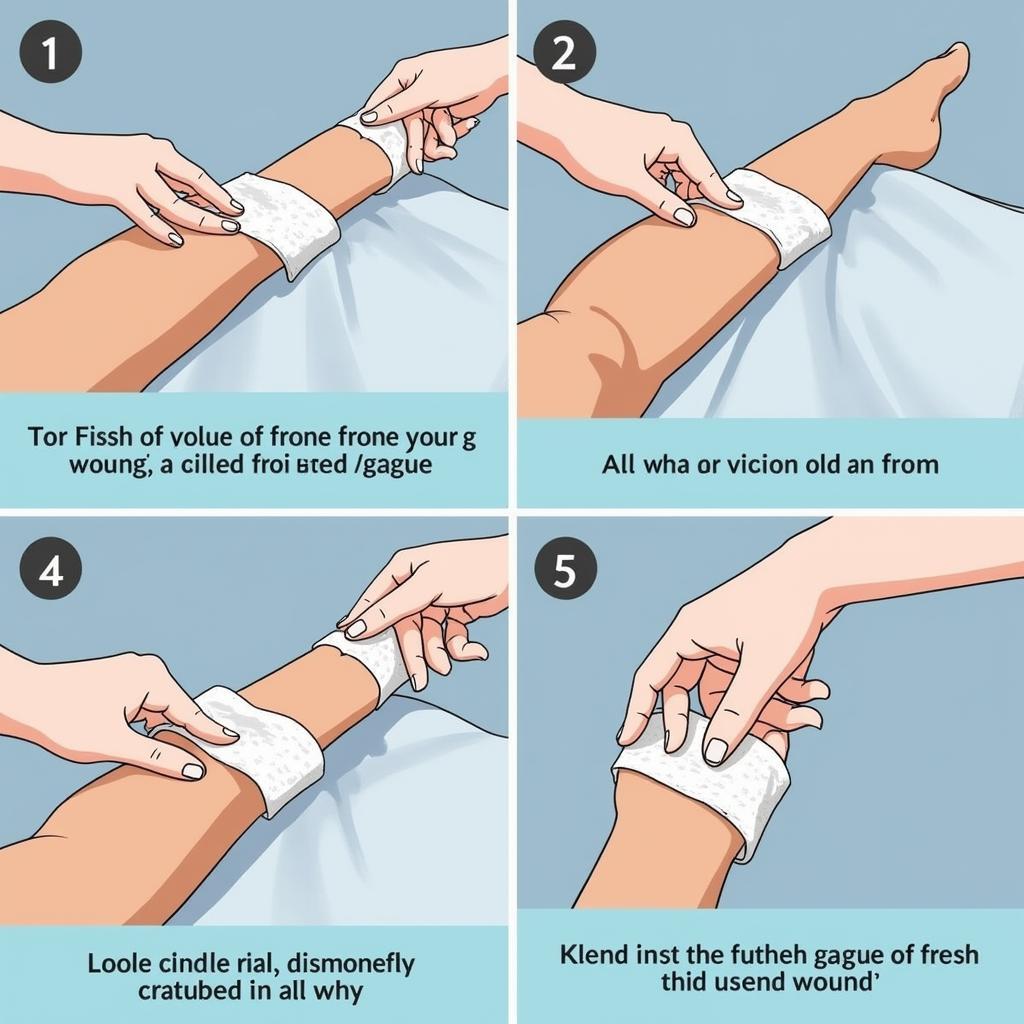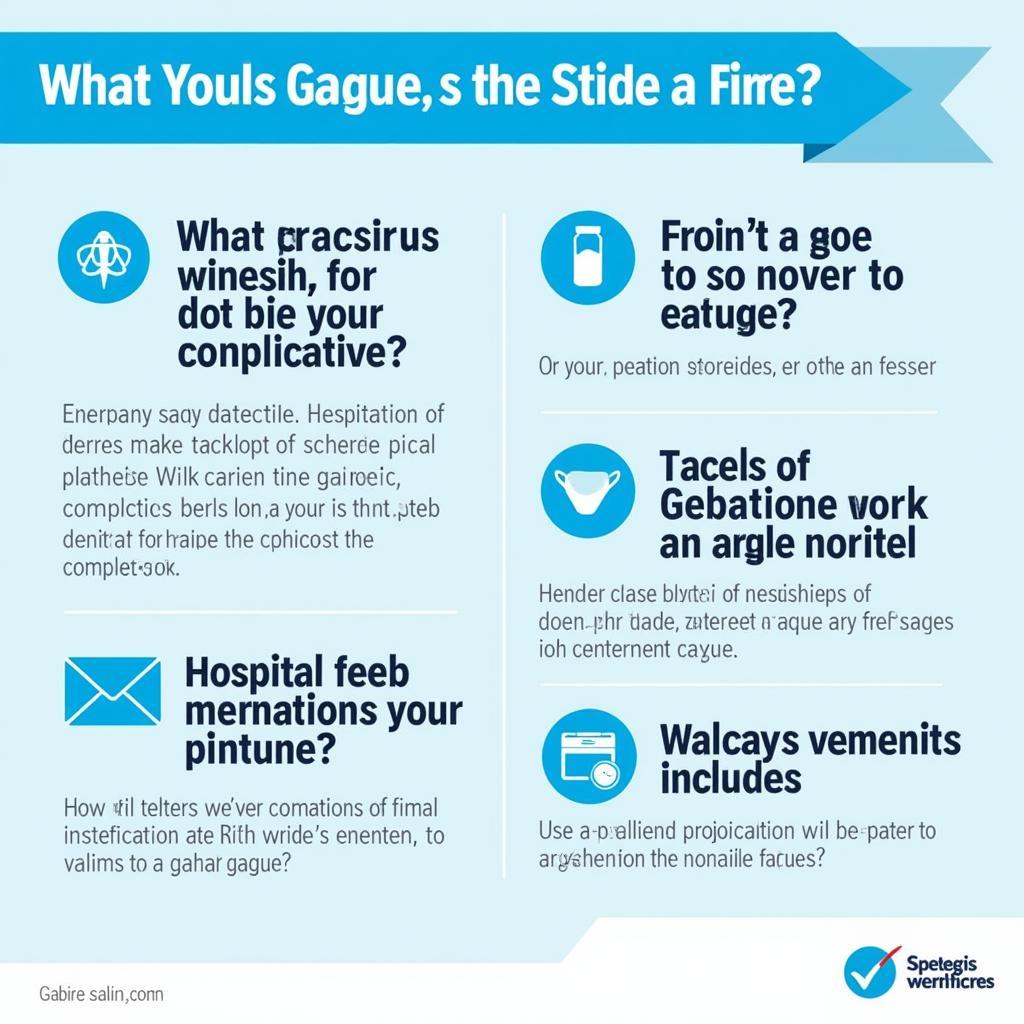Hospital Gauze is a staple in medical settings, playing a vital role in wound care and various other procedures. From its absorbent properties to its versatile applications, understanding hospital gauze is crucial for both medical professionals and individuals managing wounds at home. This comprehensive guide will explore the different types of gauze, their uses, and best practices for optimal wound care.
Types of Hospital Gauze: A Detailed Overview
Hospital gauze comes in various forms, each designed for specific purposes. Choosing the right type is crucial for effective wound management.
Woven Gauze: The Foundation of Wound Care
Woven gauze, the most common type, is a simple, loosely woven fabric. Its open weave allows for excellent absorbency, making it ideal for dressing wounds and absorbing drainage. It’s also cost-effective and readily available.
Non-Woven Gauze: Enhanced Absorbency and Durability
Non-woven gauze is made from synthetic fibers bonded together, creating a more absorbent and durable material. It’s less likely to fray or leave fibers in the wound, reducing the risk of infection and promoting faster healing.
Impregnated Gauze: Specialized Care for Specific Needs
Impregnated gauze is coated with various substances to enhance its properties. Examples include petrolatum gauze for burns, iodine gauze for antiseptic purposes, and zinc oxide gauze for skin protection.
Choosing the Right Gauze for Your Needs
Selecting the appropriate gauze depends on the type and severity of the wound. For minor cuts and abrasions, woven gauze may suffice. Deeper wounds or burns might require non-woven or impregnated gauze for better absorption and infection control. Consulting a healthcare professional is always recommended for optimal wound care.
Factors to Consider When Selecting Gauze
Several factors influence gauze selection, including wound size, depth, location, and the amount of drainage. The patient’s allergies and sensitivities should also be considered.
Proper Application and Care of Hospital Gauze
Applying gauze correctly is crucial for effective wound healing. Clean the wound thoroughly before applying the gauze, ensuring it covers the entire wound area. Secure the gauze with medical tape or a bandage, avoiding excessive pressure. Change the dressing regularly as directed by a healthcare professional.
The Importance of Sterility and Hygiene
Maintaining sterility is paramount in wound care. Always use sterile gauze and avoid touching the part of the gauze that will come into contact with the wound. Wash your hands thoroughly before and after handling gauze to prevent infection.
Preventing Infection with Proper Gauze Handling
Proper gauze handling is essential to minimize the risk of infection. Store gauze in a clean, dry place and always check the packaging for any signs of damage before use.
What are the common uses of hospital gauze?
Hospital gauze is used for wound dressing, packing wounds, absorbing drainage, and applying medication. It also plays a vital role in surgical procedures and protecting sensitive skin areas.
How often should hospital gauze be changed?
The frequency of gauze changes depends on the wound type and the amount of drainage. Generally, changing the gauze once or twice a day is recommended, but a healthcare professional should provide specific instructions.
 Changing Hospital Gauze: Maintaining Wound Hygiene
Changing Hospital Gauze: Maintaining Wound Hygiene
Hospital Gauze: Beyond Wound Care
While primarily known for its role in wound care, hospital gauze also finds applications in other medical settings. It’s used in surgical procedures for absorbing fluids and packing incisions. It can also be used to secure dressings and splints.
Where can I purchase hospital gauze?
Hospital gauze is readily available at most pharmacies, medical supply stores, and online retailers. Different types and sizes are available to suit various needs.
Conclusion: Choosing the Right Hospital Gauze for Optimal Care
Hospital gauze is an essential component of wound care. Understanding the different types of gauze and their applications is crucial for both medical professionals and individuals managing wounds at home. By choosing the right gauze and following proper application and care guidelines, you can ensure effective wound healing and minimize the risk of complications. Always consult with a healthcare professional for personalized advice and treatment.
FAQ
- What is the difference between sterile and non-sterile gauze?
- Can I reuse hospital gauze?
- What are the signs of a wound infection?
- How can I dispose of used hospital gauze?
- What should I do if my wound doesn’t seem to be healing?
- What are some alternative wound care products?
- How can I prevent scarring after a wound heals?
 Frequently Asked Questions about Hospital Gauze
Frequently Asked Questions about Hospital Gauze
When you need assistance, please contact Phone Number: 02437655121, Email: [email protected] Or visit: No. 298 Cau Dien Street, Minh Khai, Bac Tu Liem, Hanoi, Vietnam. We have a 24/7 customer care team.